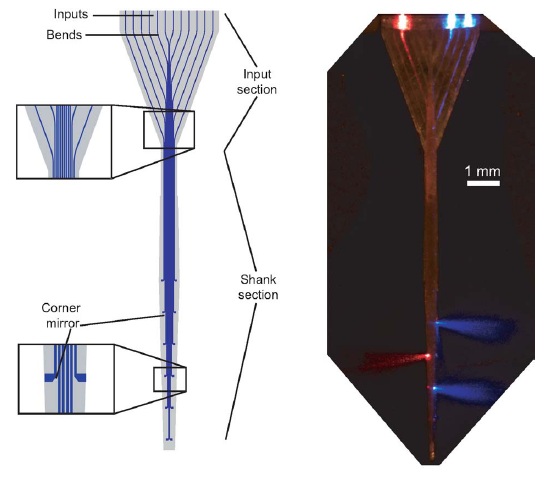Multiwaveguide implantable probe for light delivery to sets of distributed brain targets
[Publisher Link] [Local Copy]
Zorzos, A. N., Boyden, E. S.*, and Fonstad, C. G. (2010) Multiwaveguide implantable probe for light delivery to sets of distributed brain targets, Optics Letters 35(24):4133-5. (* corresponding author)

Optical fibers are commonly inserted into living tissues such as the brain in order to deliver light to deep targets for neuroscientific and neuroengineering applications such as optogenetics, in which light is used to activate or silence neurons expressing specific photosensitive proteins. However, an optical fiber is limited to delivering light to a single target within the three-dimensional structure of the brain. We here demonstrate a multiwaveguide probe capable of independently delivering light to multiple targets along the probe axis, thus enabling versatile optical control of sets of distributed brain targets. The 1.45-cm-long probe is microfabricated in the form of a 360-μm-wide array of 12 parallel silicon oxynitride (SiON) multimode waveguides clad with SiO2 and coated with aluminum; probes of custom dimensions are easily created as well. The waveguide array accepts light from a set of sources at the input end and guides the light down each waveguide to an aluminum corner mirror that efficiently deflects light away from the probe axis. Light losses at each stage are small (input coupling loss, 0.4±0.3dB; bend loss, negligible; propagation loss, 3.1±1dB/cm using the outscattering method and 3.2±0.4dB/cm using the cutback method; corner mirror loss, 1.5±0.4dB); a waveguide coupled, for example, to a 5mW source will deliver over 1.5mW to a target at a depth of 1cm.